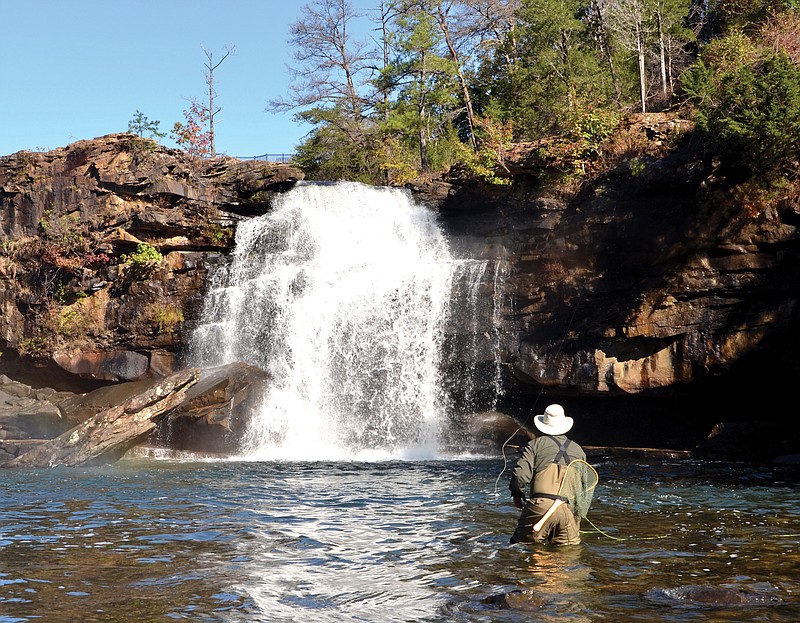Lookout is a long mountain. Stretching nearly 90 miles from Chattanooga, through Georgia and into Alabama, it holds many natural wonders. Alabama's Little River Canyon is one of the most impressive.
Like the swan song of the Cumberland Plateau, Little River has spent many thousands of years carving a deep gulf into Lookout's sandstone. Twelve miles long and more than 600 feet deep, the canyon is an enormous gash across a landscape of wooded ridges and rock outcroppings. The landform is an emphatic last hurrah on the mountain's southern tail.
The deepest stretch of canyon begins at Little River Falls, a 45-foot horseshoe cataract visible from State Route 35 about 15 minutes southeast of Fort Payne, Alabama. A visitors center and the Little River Canyon National Preserve's main parking area are on either side of a massive bridge that spans the canyon upstream of the falls. The bridge and observation deck offer spectacular views. It is a popular day-trip for waterfall watchers, located about an hour from Chattanooga.
But the crowds don't usually spill over into the canyon. At the bottom of the gorge, adventurous anglers will find spectacular scenery reminiscent of a mountain trout stream. But there are no trout. Instead, Little River is home to native redeye bass.
The Fish
Redeye bass, also known as Coosa bass, are a hoot. With a maximum length of about 14 inches, they don't grow large, but they are aggressive. They'll hit spinners, small crankbaits and flies tossed to current breaks near swift water. They are known for crushing topwater poppers when conditions are right.
Larger spotted bass also inhabit the canyon in calmer stretches, as well as sunfish like redbreast, bluegill and green sunfish. Thirty-fish days are not uncommon for skilled anglers and usually include a mix of several species.
The Gear
Lightweight spinning outfits are the tools for casting the small lures redeyes eat. Inline spinners like Mepps and Rooster Tails can be extremely effective, as well as small crankbaits like Rebel's Wee series or small crayfish-imitating jigs.
The fishery is well suited for fly fishing. Casting small popping bugs to the eddies with a 5-weight or lighter rod yields explosive topwater action. When fish are feeding subsurface, small streamers like Clousers and Woolly Buggers will get the job done.
Little River Canyon is not a walk-the-bank kind of place. Wading the river is required to reach most of the holding water. The river is warm enough to wet-wade in summer, but a good pair of wading boots makes the slick rocks much more manageable.
Access
Anglers can access the river with short hikes from the canyon rim. These hikes are extremely steep, though, and the canyon floor is rugged. You'll want to take a buddy if for no other reason than to hold your rod while you scramble down a rock face to the river. There is no cell service at all.
Before you drop into the canyon, go to the Little River Canyon Center on the west side of the SR 35 Bridge for intel, and see the kiosks in the parking areas. Most access trails depart from overlooks along Little River Canyon Parkway, which runs along the west rim.
Information
For general information and access points, Google the National Park Service's web page for Little River Canyon National Preserve.
If you want to talk fishing, contact Shannon McCurley, of North Alabama Fly Fishing (northalabamaflyfishing.com). McCurley is the unofficial expert on fishing Little River Canyon. He'd be happy to point you in the right direction.
